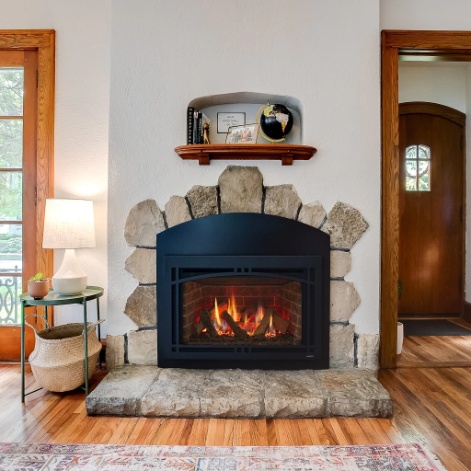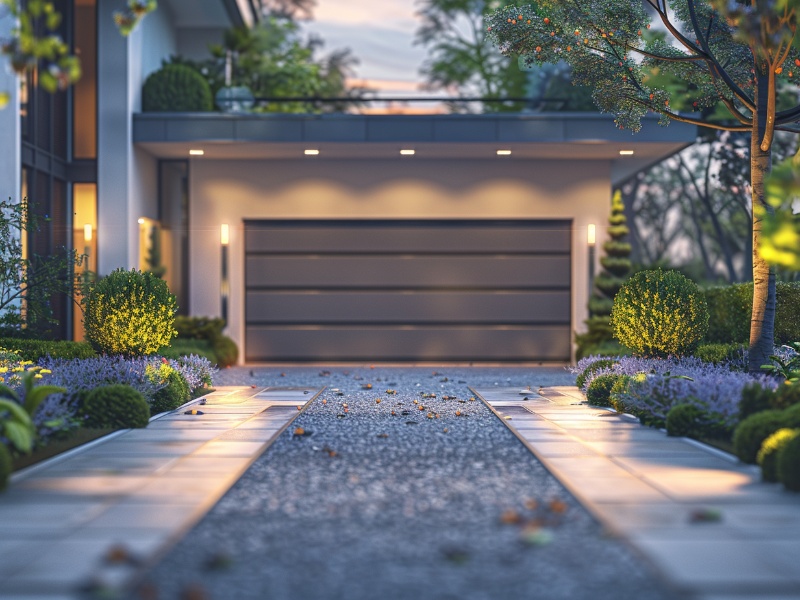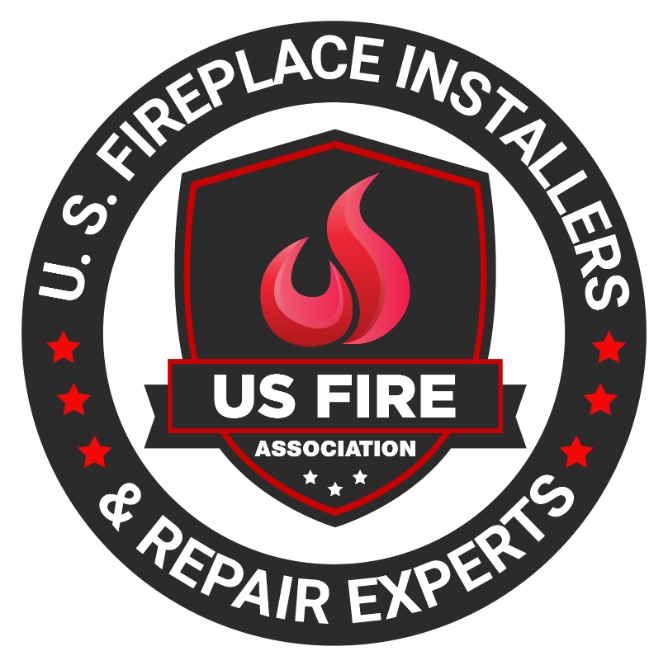Table of Contents
- 1 What is an Electric Fireplace?
- 2 Why Choose an Electric Fireplace over a Traditional Fireplace?
- 3 What are the Different Types of Electric Fireplaces?
- 4 What to Consider Before Installing an Electric Fireplace on the Wall?
- 5 How to Install an Electric Fireplace on the Wall?
- 6 Frequently Asked Questions
Are you considering installing an electric fireplace on your wall but unsure where to start?
We will explore everything you need to know about electric fireplaces, including why they are a popular choice over traditional fireplaces, the different types available, and what factors to consider before installation.
We will also guide you through a step-by-step installation process so you can enjoy a cozy and stylish addition to your home in no time.
What is an Electric Fireplace?
An electric fireplace is a modern home heating appliance that replicates the ambiance and warmth of a traditional fireplace through efficient electric heating elements, creating a cozy atmosphere in any living space.
These innovative heating units offer the convenience of adjustable heat settings, allowing you to customize the temperature in your room to suit your comfort preferences. Electric fireplaces are remarkably energy-efficient compared to traditional wood-burning fireplaces, as they do not produce any harmful emissions or require ventilation. With their realistic flame effects and ember bed, electric fireplaces bring a touch of elegance and charm to any room, transforming the ambiance and creating a welcoming and inviting atmosphere for you and your guests to enjoy.
Why Choose an Electric Fireplace over a Traditional Fireplace?
Opting for an electric fireplace over a traditional one offers several advantages, including ease of installation, energy efficiency, and cost-effectiveness, making it a popular choice for modern home improvement projects.
Electric fireplaces are designed to be a hassle-free solution, requiring no chimneys or venting, which simplifies the installation process significantly. Electric models are highly energy-efficient, consuming less power compared to traditional wood-burning fireplaces, resulting in lower utility bills. The cost-effectiveness of electric fireplaces extends beyond initial installation, as they require minimal maintenance and have a longer lifespan, reducing long-term expenses. These factors combined make electric fireplaces a practical and attractive option for homeowners looking to enhance their living spaces.
What are the Different Types of Electric Fireplaces?
Electric fireplaces come in various types to suit different preferences and space requirements, including wall-mounted models that save floor space, freestanding units for flexibility, and insert fireplaces for easy installation into existing structures.
Wall-mounted electric fireplaces provide a modern and sleek look to any room, adding both warmth and style. They are ideal for smaller spaces or areas where floor space is limited.
On the other hand, freestanding electric fireplaces offer the flexibility to be moved around the home, providing a portable heating solution.
Insert models are designed to fit seamlessly into existing fireplace openings, offering a quick and hassle-free way to upgrade to an electric heating option.
Each type brings its own advantages, catering to diverse preferences and needs.
Wall-Mounted Electric Fireplaces
Wall-mounted electric fireplaces are popular for their sleek design and space-saving benefits, adding a touch of modern elegance to any room’s decor while providing efficient heating.
They come in various sizes and styles, from minimalist black frames to more ornate designs with faux stone or wood finishes, allowing them to blend seamlessly with different interior aesthetics.
Beyond their aesthetic appeal, these fireplaces offer the convenience of easily being mounted on the wall, freeing up floor space and creating a focal point in the room.
The dancing flames and adjustable flame colors contribute to a cozy atmosphere, offering both warmth and a visually appealing display for any decor style.
Freestanding Electric Fireplaces
Freestanding electric fireplaces offer versatility in design and placement, allowing for easy relocation and customization to match various interior design styles while providing convenient heating solutions.
Their design flexibility enables them to complement both modern and traditional decor, making them a popular choice for homeowners seeking a functional yet stylish heating solution. These fireplaces come in a range of sizes, shapes, and finishes, allowing for seamless integration into any room layout. In addition to adding warmth and ambiance, they can also serve as a focal point in a space, enhancing the overall aesthetic. The ability to adjust flame settings and heat output provides control over both the visual appeal and comfort level, catering to individual preferences.
Insert Electric Fireplaces
Insert electric fireplaces are ideal for retrofitting into existing fireplaces, offering a convenient home improvement solution to enhance the ambiance and heating efficiency of traditional setups.
They provide a modern touch to any living space, transforming the look and feel of the room with their sleek designs and customizable features. These electric fireplaces eliminate the hassle of storing and chopping wood, making them a cleaner and more eco-friendly option. They are easy to install and maintain, reducing the cost and time associated with traditional fireplace maintenance. With adjustable settings for heat output and flame effects, they offer versatility to create the perfect atmosphere for any occasion.
What to Consider Before Installing an Electric Fireplace on the Wall?
Before installing an electric fireplace on the wall, it’s crucial to consider factors such as room layout, optimal positioning for heat distribution, and following the recommended installation tips for a safe and efficient setup.
- When evaluating the room layout, ensure that the fireplace is placed away from any potential obstructions that could hinder its functionality. Take into account the proximity to furniture or curtains to prevent any heat damage.
- Safety precautions like ensuring proper ventilation and checking electrical connections are essential steps in the installation process.
As for installation tips, make sure to secure the mounting brackets firmly to the wall studs for stability and always follow the manufacturer’s guidelines for a seamless installation.
Location and Wall Space
Selecting the right location and wall space for your electric fireplace is essential to ensure proper sizing, optimal heat distribution, and seamless integration with your room’s layout and decor.
Consider the size of the wall space available to determine the dimensions of the electric fireplace that will best fit the area. A unit that is too large or too small can throw off the balance of the room.
It is also crucial to place the fireplace in a central location to maximize heat distribution effectively, ensuring that warmth reaches all areas. Aligning the unit with the room’s aesthetics, whether it be a modern, traditional, or minimalist style, helps create a cohesive and visually appealing space.
Power Source
Determining a suitable power source and ensuring the correct voltage requirements for your electric fireplace are crucial steps to guarantee safe operation, energy efficiency, and optimal performance of the unit.
The power source for your electric fireplace plays a vital role not only in its functionality but also in ensuring the safety of your home. By selecting the right voltage, you can prevent electrical hazards and potential damage to the unit.
Choosing the appropriate power source can significantly impact the energy efficiency of the fireplace, helping you save on electricity costs in the long run. Therefore, understanding the power requirements and voltage specifications of your electric fireplace is essential for its overall effectiveness and user satisfaction.
Safety Precautions
Prioritizing safety precautions when installing an electric fireplace is paramount to prevent fire hazards, ensure proper ventilation, and maintain the overall safety of the heating appliance and your living space.
One crucial fire safety protocol to follow during the installation process is to keep all flammable materials at a safe distance from the electric fireplace. It’s essential to check the ventilation requirements specified by the manufacturer to prevent overheating and ensure proper airflow. General precautions such as keeping the area around the fireplace clear of any obstacles and avoiding overloading electrical circuits also contribute to a secure setup. These measures not only protect your home but also help in maximizing the longevity and efficiency of the electric fireplace.
How to Install an Electric Fireplace on the Wall?
Installing an electric fireplace on the wall is a rewarding DIY project that can elevate your home’s ambiance and heating efficiency, following a few simple steps for a successful and secure setup.
- First, ensure you have the necessary tools on hand, such as a drill, screws, level, and stud finder.
- Start by choosing a suitable location for the fireplace, ensuring it is free from obstructions and at a safe distance from flammable materials.
- Next, mark the position where you want to mount the unit and locate the wall studs using a stud finder.
- Once the studs are identified, securely attach the mounting bracket to the wall following the manufacturer’s instructions.
- Carefully lift the fireplace onto the bracket and ensure it is level before tightening the screws to secure it in place.
Gather Tools and Materials
Before starting the installation, gather the necessary tools and materials required for mounting the electric fireplace securely, ensuring you have everything on hand for a smooth and efficient setup.
Among the essential tools you will need are a stud finder to locate the wall studs for secure installation, a level to ensure the fireplace is straight, and a drill with appropriate drill bits for making holes.
Materials such as mounting brackets, screws, and wall anchors will be necessary for attaching the fireplace to the wall. Safety equipment like gloves and safety goggles are crucial to protect yourself during the installation process.
Before starting, make sure to clear the area around the installation site and read the manufacturer’s instructions carefully for a successful installation.
Measure and Mark the Wall
Accurate measurement and marking of the wall are essential steps to position the electric fireplace correctly, ensuring a level installation and proper alignment with your room’s layout and decor.
Precise measurements help determine the exact placement of the fireplace relative to surrounding furniture and fixtures. Using a level during installation ensures that the unit is mounted evenly, avoiding any tilting issues. Consider the overall aesthetic of the room when marking the wall for installation, ensuring the fireplace complements the existing design elements.
Tools like a tape measure, pencil, level, and stud finder are crucial for accurate measurements and markings. Taking time with these initial steps can result in a beautiful and functional addition to your home.
Install the Mounting Bracket
Securing the mounting bracket for the electric fireplace is a critical step. This ensures stability and safety. As a result, it provides a sturdy foundation for attaching the unit securely to the wall.
When it comes to installing the mounting bracket for a wall-mounted electric fireplace, there are various types of brackets available. These include flush mounts and adjustable brackets. Before starting the installation process, it is important to carefully read the manufacturer’s instructions. This will determine the appropriate bracket for your specific fireplace model. Once you have selected the correct bracket, ensure that it is securely attached to the wall studs using heavy-duty screws or anchors. It is recommended to use a level to ensure that the bracket is aligned properly before attaching the electric fireplace.
Secure the Fireplace to the Wall
Securing the electric fireplace to the wall using appropriate fasteners and secure mounting techniques is essential for stability and safety. Consulting a professional from Dreifuss Fireplaces for complex installations is advisable.
When attaching the electric fireplace to the wall, it’s important to select the right type of fasteners. These are based on the wall material to ensure a strong and secure hold. For drywall, use anchors that can support the weight of the fireplace. Always follow the manufacturer’s instructions for installation to guarantee a proper fit. Prior to mounting, consider the clearance requirements and ensure there are no obstructions that could pose a hazard. Professional help may be necessary if the installation presents challenges. You can also get professional assistance if you are unsure about the secure attachment of the fireplace.
Connect the Power Source
Connecting the electric fireplace to a reliable power source and ensuring correct wiring is essential. This will enable the unit’s heating functions, maintain energy efficiency, and prevent electrical hazards in your home.
To begin, locate a nearby power outlet that can handle the voltage requirements of your electric fireplace. Use a dedicated circuit to avoid overloading existing circuits. When connecting the unit, always follow the manufacturer’s instructions for proper wiring. Securely plug the fireplace into the outlet, ensuring there are no frayed wires or loose connections. Consider installing a surge protector to safeguard against power surges. Regularly inspect the wiring for any signs of wear or damage to maintain a safe electrical connection.
Test and Enjoy Your New Electric Fireplace
After completing the installation, it’s time to test the electric fireplace to ensure proper functionality. The test will also ensure heat output, and ambiance enhancement. This allows you to enjoy a cozy and stylish living space.
Begin by turning on the fireplace and adjusting the heat settings to your preferred level. Feel the warmth emanating from the unit and listen to the soothing crackling sounds to gauge its ambiance.
Test the different flame settings and colors to find the one that best suits your decor and mood. Check the remote control functions and ensure all features are in working order.
To maximize heating efficiency, place the fireplace in a central location. In addition, keep surrounding furniture at a safe distance to prevent overheating. Use decorative logs, stones, or crystals to enhance the aesthetic appeal. This also adds a personalized touch to your space.
Frequently Asked Questions
1. What is an electric fireplace?
An electric fireplace is a heater that mimics a traditional fireplace. It uses electric heating elements to provide warmth. Also, it often features realistic flame effects to enhance the ambiance of any room.
2. Why choose an electric fireplace over a traditional fireplace?
Choosing an electric fireplace offers benefits like ease of installation, no need for a chimney, energy efficiency, and cost-effectiveness. It is a practical choice for modern living spaces.
3. What are the different types of electric fireplaces?
There are several types of electric fireplaces, including wall-mounted units, freestanding models, and inserts that fit into existing fireplaces. Each type offers unique advantages for different living spaces and preferences.
4. How to install an electric fireplace on the wall?
To install an electric fireplace on the wall, first select the installation spot. Then, attach the mounting bracket securely to the wall studs. Next, connect the fireplace to the bracket. Finally, plug it into an electrical outlet.
5. What to consider before installing an electric fireplace on the wall?
Before installing an electric fireplace on the wall, consider the location, and wall space. In addition, think about proximity to power sources, and ensure the wall can support the fireplace’s weight. Also, follow local building codes and manufacturer’s guidelines.
6. How many fireplaces can I have in my home?
The number of fireplaces you can have in your home typically depends on local building codes. It also depends on the size of your home, and ventilation options. Always consult with local authorities and professionals to ensure safety and compliance.
Latest Articles

What Is An NG (Natural Gas) Indicator And Why You Need It For Your Fireplace
Table of Contents1 Understanding Natural Gas Fireplaces2 What is an NG Indicator?3 Importance of NG Indicators for Safety4 Types of NG Indicators5 Installation and Maintenance of NG Indicators6 Signs of a Faulty NG Indicator7 Frequently Asked Questions Natural gas fireplaces are a favored option among numerous homeowners due to their convenience and effectiveness. But, what is an NG (Natural Gas) indicator and why you need it for your fireplace? It is imperative to comprehend how they function and the significance of having an NG (Natural Gas) indicator for safety purposes. This article delves into the definition and significance of NG indicators. We will discuss the potential hazards associated with the absence of one and the various types of indicators accessible. Also, we will discuss installation and maintenance recommendations, and methods to recognize and rectify issues with malfunctioning indicators. Stay well-informed and ensure the safety of your home by referring to this exhaustive guide. Understanding Natural Gas Fireplaces Natural gas fireplaces serve as an efficient and convenient heating option for numerous households. They utilize natural gas as a fuel source to deliver consistent warmth and ambiance. How They Work and Why They Need NG Indicators The operation of natural gas fireplaces involves igniting natural gas to generate heat. This process requires diligent monitoring to ensure both safety and efficiency, a task facilitated by the use of NG indicators. NG indicators play a critical role in detecting potential gas leaks. They enable residents to promptly address and mitigate any associated hazards. Through continuous monitoring of gas levels and providing timely warnings and alerts, NG indicators uphold a secure indoor environment. It is imperative to ensure that these indicators function properly to facilitate the effective operation of natural gas fireplaces. This helps mitigate the inherent risks linked to gas leaks. What is an NG Indicator? An NG indicator is a specialized device equipped with advanced sensors and technology. It is specifically designed to detect natural gas leaks and monitor gas pressure in appliances, such as fireplaces. Definition and Purpose The NG indicator functions as a detector that monitors gas appliances for potential leaks. It provides essential functionality to ensure safety in households utilizing natural gas. These detectors play a crucial role in protecting residences by notifying occupants of dangerous gas leaks long before they escalate into perilous situations. Through continuous monitoring of gas levels in the vicinity, NG indicators offer an additional layer of protection. This is particularly important in properties that rely on gas-operated fireplaces or stoves. These devices not only help avert potential disasters but also enhance the overall peace of mind of homeowners. They assure them that their living spaces are equipped with reliable safety features. Importance of NG Indicators for Safety Natural gas indicators are essential for maintaining safety in households equipped with natural gas appliances. These devices serve as a proactive measure to promptly detect gas leaks. This offers homeowners a sense of security and assurance. Potential Dangers of Not Having an NG Indicator The absence of an NG indicator in residences equipped with natural gas appliances can pose significant hazards. This includes the risk of undetected gas leaks , carbon monoxide poisoning , and pilot outages that may lead to dangerous situations. These potential risks can profoundly impact indoor air quality. They directly influence the health and safety of individuals residing in the household. Undetected gas leaks can go unnoticed, gradually permeating the air and creating a potentially explosive environment. Insufficient ventilation from undetected exposure to carbon monoxide can lead to serious health complications. These range from mild symptoms such as dizziness to fatal poisoning. Without proper monitoring from an NG indicator, families are left susceptible to these concealed threats. This underscores the critical importance of implementing proactive measures to mitigate such risks. Types of NG Indicators Indicators for Natural Gas (NG) are available in diverse types. Each presents distinct detection capabilities tailored to specific requirements, encompassing both manual and automated alternatives. Manual vs. Automatic Indicators Manual NG indicators require user intervention for monitoring gas levels and identifying leaks. On the other hand, automatic indicators employ sophisticated technology to deliver continuous, real-time monitoring. This heightened efficiency and oversight enhance safety protocols. Conventional manual indicators rely on individuals to physically inspect and evaluate gas levels periodically. This renders them more susceptible to human errors. Conversely, automatic indicators feature sensors capable of promptly detecting even the most minute fluctuations in gas levels. This establishes a more dependable and precise monitoring mechanism. Automatic indicators can activate alerts and shut-off systems upon detecting a leak. This ensures immediate action to avert potential hazards. This advanced technology enhances safety protocols and instills a sense of command and assurance among users. Installation and Maintenance of NG Indicators The reliable and accurate performance of NG indicators necessitates proper installation and consistent maintenance. This often entails professional installation and adherence to recommended service guidelines. Proper Installation and Regular Maintenance Tips The proper installation of NG indicators involves adhering to the specifications in the user manual. Maintenance protocols entail strict adherence to a predetermined maintenance schedule to ensure sustained operational efficiency. During the installation phase, it is imperative to verify that the NG indicators are securely affixed in the designated location as stipulated by the manufacturer. Crucial steps include confirming power source compatibility and ensuring proper grounding of the device to optimize performance. Calibration of the indicator must be executed meticulously to ensure precise readings. Regarding maintenance, essential practices include regular inspection for signs of wear, thorough cleaning of the indicator components, and routine functionality tests. By allocating time to a consistent maintenance regimen, the NG indicator can operate with optimal efficiency over an extended duration. Signs of a Faulty NG Indicator Recognizing indicators of a malfunctioning NG indicator is essential for upholding safety and performance standards. Inaccuracies and detection issues can undermine the efficacy of these devices. Identifying and Addressing Issues The process of identifying and addressing issues related to NG (natural gas) indicators requires a systematic troubleshooting approach. This ensures their optimal performance

What You Need To Know About Gas Log Set Safety And Installation Considerations
Table of Contents1 Understanding Gas Log Sets2 Safety Considerations for Gas Log Sets3 Installation Guidelines for Gas Log Sets4 Maintaining and Troubleshooting Gas Log Sets5 Frequently Asked Questions Gas log sets are a favored option among homeowners seeking to enjoy the comfort and atmosphere of a conventional fireplace without the inconvenience of wood. This article tells you what you need to know about gas log set safety and installation considerations. Before incorporating one into your residence, it is imperative to understand the safety considerations associated with their use. This discussion delves into the potential hazards linked with gas log sets. It presents crucial precautions to uphold the safety of your home. Also, it outlines proper installation procedures and offers insight into common errors to avoid. Finally, it provides advice on maintenance and troubleshooting. Gain comprehensive knowledge on gas log set safety and installation considerations. Understanding Gas Log Sets Comprehending gas log sets is essential for individuals seeking to elevate their fireplace experience, and for gas lag set safety and installation. These heating appliances can operate on either natural gas or propane. In addition, they are available in a range of styles, including vented, ventless, and vent-free options. They provide an array of benefits and customization opportunities through various fireplace accessories. What are Gas Log Sets? Gas log sets are meticulously crafted artificial logs. They are designed to imitate the appearance and functionality of authentic wood logs within fireplaces. These gas log sets typically consist of ceramic or refractory concrete logs that have been skillfully molded and painted. This allows them to replicate the natural grain and texture of real wood. The logs are arranged in various configurations within the fireplace. They establish a realistic and welcoming ambiance. In addition to the logs, gas log sets often include fireplace accessories such as glowing embers. Accessories also include decorative stones, and even pine cones to enhance the overall aesthetic appeal. Homeowners can select from an array of placement options. These include traditional wood stack, cascading driftwood, or a contemporary geometric arrangement. Homeowners can align their preferred style and design preferences. Safety Considerations for Gas Log Sets Safety considerations for gas log sets are of utmost importance to guarantee a secure and pleasant fireplace experience. It is essential to address potential hazards such as carbon monoxide exposure, gas leaks, and fire safety to maintain a safe environment for homeowners. Potential Hazards and Precautions Gas log sets come with potential hazards that must be taken seriously, including the risks of gas leaks, carbon monoxide poisoning, and fire incidents. It is imperative to establish and adhere to rigorous safety measures to ensure the well-being of individuals and properties involved in the use of gas log sets. Gas leaks represent a significant hazard when utilizing gas log sets. They can result in the accumulation of combustible gas within the premises, heightening the possibility of explosions or fires. Carbon monoxide, an insidious gas generated during incomplete combustion, poses a grave threat due to its colorless and odorless nature, making it undetectable without proper monitoring. To address these risks effectively, it is vital to install carbon monoxide detectors and gas leak sensors in the vicinity of the gas logs. Routine maintenance checks on the gas log system, including cleaning and inspection procedures, are critical to ensure safe operations and the prompt identification of potential issues. In case of a gas leak or suspected presence of carbon monoxide, immediate evacuation of the affected area is paramount, followed by prompt contact with emergency services. Recognizing the distinct odor of rotten eggs associated with natural gas can serve as an early warning sign, prompting swift actions to avert any potential accidents. Installation Guidelines for Gas Log Sets The installation of a gas log set necessitates meticulous planning and strict adherence to specific guidelines. This includes verifying a secure gas connection, ensuring proper gas lines are in place, and complying with local building codes. Often, the complexity of these requirements may require the expertise of a certified technician. Proper Installation Techniques The appropriate installation procedures for gas log sets involve the secure connection of gas lines, meticulous adherence to installation manuals, and strict compliance with local building codes. It is imperative to prioritize the guarantee of secure gas connections to avert leaks and potential safety hazards. During the installation of gas log sets, utilizing suitable sealants and fittings is essential to establish a tightly sealed connection. The correct installation of gas lines is critical for both the safety and operational efficacy of the gas log set. Reference to the installation manual is highly advisable for detailed, step-by-step guidance to prevent inaccuracies and ensure the successful establishment of the gas log set. Consistently adhering to building codes and regulations upholds safety standards. Seeking guidance and confirmation from a certified technician before and after installation can offer invaluable support and assurance throughout the process. Common Installation Mistakes to Avoid It is imperative to avoid common installation errors to ensure the secure and effective operation of gas log sets. This includes verifying proper gas connections and compliance with building codes. Improper gas connections can result in leaks and potential hazards, underscoring the importance of verifying the tightness and correct alignment of all fittings. Failure to adhere to building codes can lead to structural complications, penalties for non-compliance, or even safety concerns. To prevent these oversights, it is advised to consult the manufacturer’s installation guidelines and strictly adhere to local regulations. Engaging a certified technician for the installation of gas log sets guarantees that the procedure is carried out accurately and securely. This provides assurance that the system is functioning as intended. Maintaining and Troubleshooting Gas Log Sets Regular maintenance and troubleshooting of gas log sets are imperative to uphold their optimal performance and safety. This includes thorough examination of the pilot light, pilot assembly, and other gas appliances to preserve heating efficiency and promptly resolve any arising issues. Tips for Maintenance and Repair Ensuring the proper maintenance of your gas log set necessitates conducting

Key Considerations For Using Compressed Liquid Propane In Fireplace Installation
Table of Contents1 What is Compressed Liquid Propane?2 Benefits of Using Compressed Liquid Propane in Fireplaces3 Safety Precautions for Installing Compressed Liquid Propane Fireplaces4 Installation Process for Compressed Liquid Propane Fireplaces5 Maintenance and Care for Compressed Liquid Propane Fireplaces6 Alternative Fuel Options for Fireplaces7 Frequently Asked Questions If you are contemplating the use of compressed liquid propane in your fireplace installation, this discussion will delve into the advantages of adopting this alternative fuel option. These benefits include enhanced efficiency, cost savings, and important safety precautions to consider. Furthermore, a detailed step-by-step guide on the installation process will be provided, along with recommendations for maintenance and care. A comparison of various fuel options for fireplaces will also be conducted to assist you in making an informed decision. We encourage you to stay engaged to gain insights into optimizing your fireplace’s capabilities with compressed liquid propane. What is Compressed Liquid Propane? Compressed Liquid Propane is a versatile energy source contained in a high-pressure propane tank. It finds extensive utility in both residential and commercial settings, prominently including fireplaces. Recognized for its convenience and efficiency, Compressed Liquid Propane emerges as a favored option for heating residential spaces and facilitating culinary pursuits across various environments. Additionally, it serves as a viable fuel substitute in vehicular contexts, portable cooktops, and outdoor grilling scenarios due to its propensity for clean combustion. The attribute of portability, coupled with ease of storage, positions Compressed Liquid Propane as an optimal energy source for individuals residing off the conventional grid. It is also great for engaging in outdoor activities such as camping and recreational vehicle (RV) travel. Moreover, the high energy density inherent to Compressed Liquid Propane renders it a dependable choice for sustaining generators during instances of power disruptions. Benefits of Using Compressed Liquid Propane in Fireplaces Utilizing Compressed Liquid Propane for fireplace installation presents several benefits. These include enhanced fuel efficiency, convenience, cost-effectiveness, and a favorable environmental footprint. These attributes render it a recommended option for heating solutions, applicable to both on-grid and off-grid settings. Efficiency and Cost Savings The utilization of Compressed Liquid Propane in fireplaces offers significant advantages, notably in terms of high fuel efficiency and cost-effectiveness. These attributes are underscored by the exceptional BTU rating and overall heating efficiency of Compressed Liquid Propane. The elevated fuel efficiency exhibited by Compressed Liquid Propane fireplaces necessitates less fuel to generate the same level of heat compared to traditional wood-burning fireplaces or electric heating systems. Consequently, homeowners can realize cost savings on their heating expenditures over an extended period. Moreover, the clean-burning characteristics of propane minimize maintenance costs linked to soot and ash cleanup. This further enhances the cost-effectiveness of employing propane fireplaces. Safety Precautions for Installing Compressed Liquid Propane Fireplaces Ensuring safety is of utmost importance during the installation of Compressed Liquid Propane fireplaces. This requires strict adherence to safety regulations, meticulous attention to proper ventilation requirements, careful control of ignition sources, and the incorporation of carbon monoxide and gas leak detection systems. Important Safety Measures Essential safety protocols for the installation of Compressed Liquid Propane fireplaces encompass adherence to fire safety regulations. Engaging in professional assessments and employing sophisticated gas leak and carbon monoxide detection mechanisms is crucial. Professional evaluations play a critical role in identifying any prospective hazards or irregularities within the fireplace infrastructure. These assessments are vital in ensuring the operational integrity of all components and compliance with safety protocols. Routine inspections serve to forestall potential fire incidents, gas discharges, or carbon monoxide emissions that could pose significant threats to both the property and individuals in the vicinity. The utilization of advanced gas leak and carbon monoxide detection systems serves as an additional safeguard by promptly notifying occupants of any elevated levels of these hazardous gases. Installation Process for Compressed Liquid Propane Fireplaces The installation procedure for Compressed Liquid Propane fireplaces encompasses several critical steps. These include: Adhering to installation guidelines Correctly positioning the propane tank Ensuring precise gas line installation Optimizing heat output Monitoring pressure regulation Establishing the pilot light Step-by-Step Guide The installation process of Compressed Liquid Propane fireplaces involves a systematic approach. This begins with the construction of the firebox, followed by the installation of the gas control valve, setup of the ignition system, design of the flue, and verification of a suitable combustion air supply. The construction of the firebox assumes critical importance as it serves as the foundation of the fireplace structure. It securely holds the combustible materials in place. Subsequently, the gas control valve plays a key role in managing the propane flow, guaranteeing safe and efficient operation. The installation of the ignition system facilitates convenient and reliable fire initiation. Designing the flue is a necessary step to direct exhaust gases outside, thus preventing their accumulation indoors. Moreover, ensuring a proper combustion air supply is essential to sustain optimal burning conditions and enhance fuel consumption efficiency. Each component contributes significantly to the functionality and safety of the fireplace installation process. This underscores the importance of meticulous attention to detail and adherence to established protocols. Maintenance and Care for Compressed Liquid Propane Fireplaces Consistent maintenance and attention to Compressed Liquid Propane fireplaces are imperative to guarantee their optimal functionality. This includes adherence to prescribed maintenance protocols, regular chimney upkeep, prevention of soot accumulation, and scheduling of routine propane deliveries and professional inspections. Tips for Keeping Your Fireplace in Good Condition For the maintenance of your Compressed Liquid Propane fireplace, it is essential to conduct regular checks on ignition sources. Monitor flame appearance, clean the gas burner and pilot assembly, and verify the correct operation of the safety shut-off valve. The inspection of ignition sources requires a detailed examination of the electronic igniter. This helps identify any signs of damage or corrosion and ensures proper sparking upon activation. Monitoring flame appearance involves observing a consistent blue flame with minimal flickering, which signifies efficient combustion. Cleaning the gas burner and pilot assembly can be performed using a soft brush or compressed air to eliminate any dirt or debris that may
